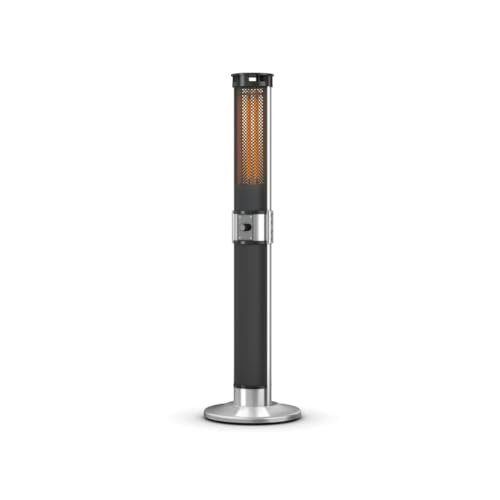How to Choose a Patio Heat Lamp Electric
When you want to heat your patio, there are numerous options. Unlike propane models that require refills, electric heaters can deliver instant heat by flicking the switch or pressing a button.
These units don't emit any gasses that could cause an health risk. Some units are equipped with adjustable heating settings to accommodate varying distances.
Heater Type
You can relax outside well into the evening and all through the year with the right patio heater. There are several types of heaters for patios, including freestanding natural gas and propane models, as in addition to ceiling- or wall-mounted electric radiant heaters. The choice you make will depend on the size of your area, the your power source and individual preferences.
Most patio heaters use electricity, liquid or natural gas to generate heat. similar web-site emit heat through convection heating as well as radiant heating. The heat output of patio heaters is measured in watts, which can be converted into British thermal units (BTUs), for comparison. Some models can be adjusted in temperatures to allow more flexibility.
similar web-site incorporate a burner mounted on a pole with an aperforated screen that reflects the flames and radiates heat downwards to warm people, objects and furniture. Some have an reflector on top of the burner that can be plated with silver to decrease the amount of heat lost upwards.
Gas patio heaters are the most popular heaters for patios. They are able to heat multiple tables quickly and evenly. They can be portable and run off the propane tank or plugged into your natural gas line which is more convenience and lower cost of installation, but they require ongoing expenses for fuel.
Gas patio heaters are becoming more popular as more houses have natural gas lines. They're easy to set up, however they require a dedicated and functioning gas line in order to operate safely. Portable natural gas heaters are available with extension hoses to overcome this limitation, but these can be a tripping risk and can create an additional fire hazard when not in use.
Safety
Electric patio heaters can be used safely in enclosed areas since they allow heat to radiate upwards and not outward. However, they're not designed to be used on an open roof; the heater must be installed at least 18" from adjacent walls or 6" from the ceiling to avoid fire hazards.

Gas and propane patio heaters are typically safe to be installed in enclosed areas that have an enduring cover specifically designed for use in open air. They are usually constructed of fire-retardant fabric and have a roof that can be closed. similar web-site with these types of outdoor patio heaters is due to the fumes and flames they produce. They should be kept away from items that ignite, such as curtains and chairs.
Follow the guidelines and safety measures of the manufacturer before installing the patio heater or heat lamp. Choose a system that has UL and CSA safety certifications and be sure to read the owner's manual thoroughly. Be extra cautious with pets and children and make sure the heater is not near them when it's running. Some patio heaters that are freestanding like EUROM's include a tipping safety feature that shuts the device off in the event of a fall.
If your patio heater is connected to a natural gas line, you should be sure to check the condition of the line regularly and have it tested by a licensed professional to identify leaks. If the line has to be replaced, make sure to employ a licensed plumber. A professional is able to determine if the line is required to be routed through an underground pipe or not. A professional can also ensure that the patio heater is plugged in to an outlet that is GFCI-rated (ground fault circuit interruptioner) to guard against electric sparks and fires.
Installation
The the height at which a patio heater is mounted affects how much heat it will radiate into the space. It is essential to place the heater at a safe distance from the surface such as plastic that can deform, as well as wood, which can get too hot. Depending on the model of the heater you may choose to mount it on a structure or wall using traditional mounting brackets. Certain models come with a soft starter that reduces the peak current to protect your circuits.
